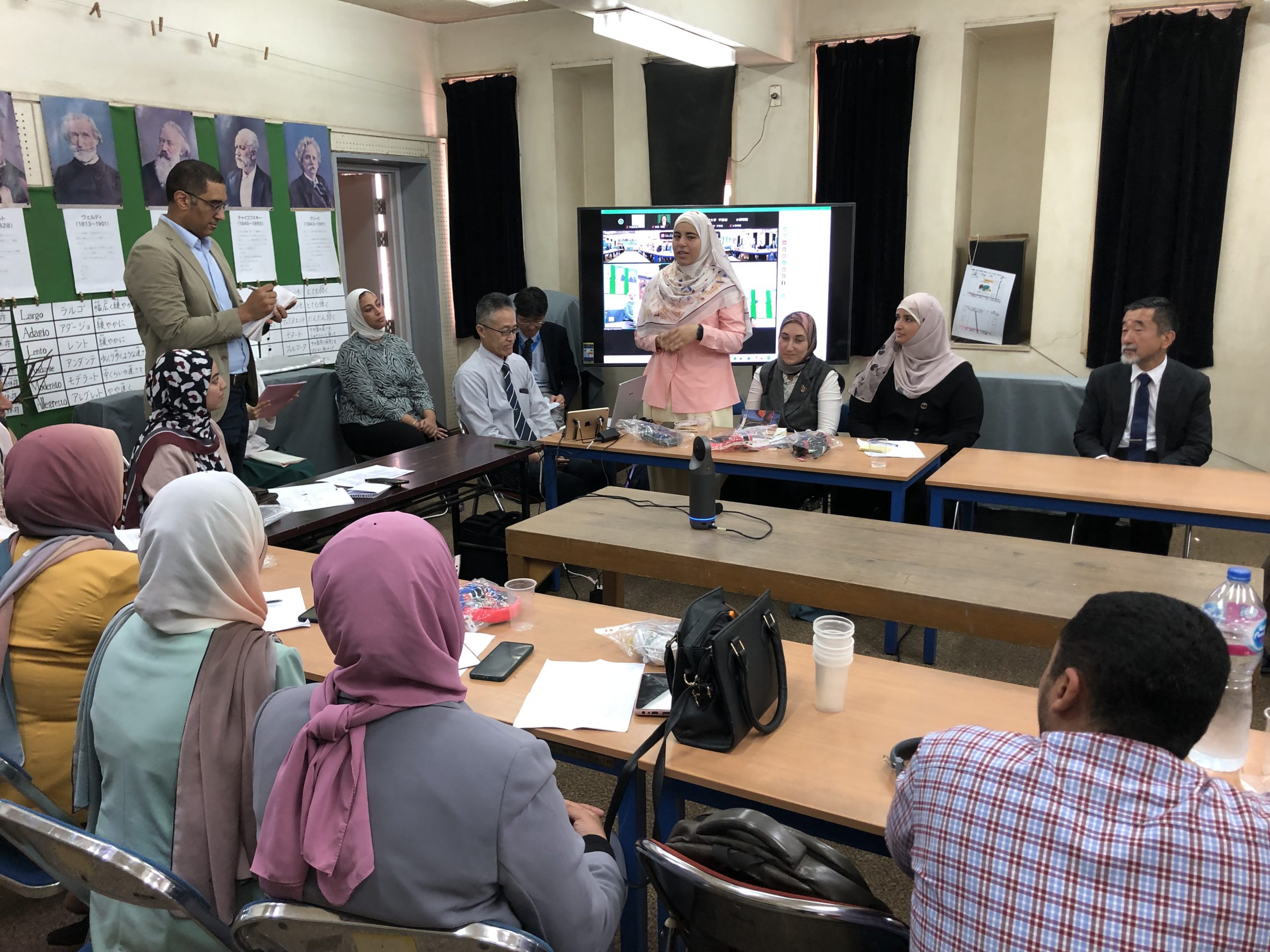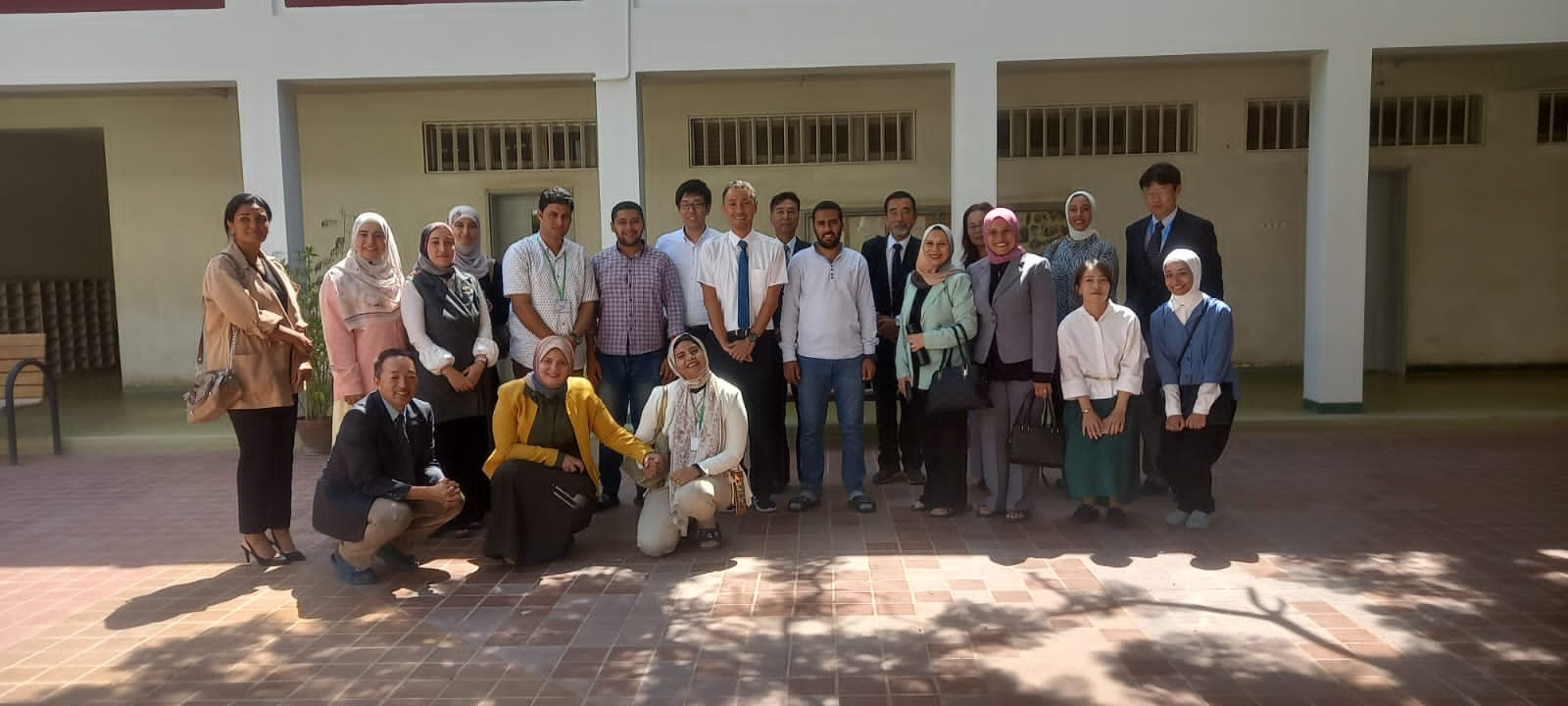extracurricular, homeroom activities and brainstorming
On September 18, 2023, 10 teachers from the Egypt-Japan School (EJS) were invited to an open “TOKKATSU” lesson (extracurricular activities including homeroom activities) and a brainstorming session at the Cairo Japanese School (CJS; Principal: Shinya Fukushima). EJS, where Japanese-style education has already been introduced, is making great efforts toward the implementation of TOKKATSU. One member of the investigative research team visited in-person, while 10 others participated online from Japan.
Six 1st and 2nd year elementary school students participated in the homeroom activity with the theme of “Become a handwashing master and say goodbye to germs.” The session was led by Hara Keigo (T1 of two-person team-teaching group) and Omiya Kotaro (T2), an external teacher from Saraya Co., Ltd. By learning the processes and methods of handwashing, the aim of the activity was to help the children to get rid of the dirt and germs on their hands so that they can be healthy and vigorous in their day-to-day lives.
First, based on the results of a pre-survey, it was recognized that the issues for the children are that soap is not used for handwashing, and that they do not wipe their hands dry afterwards. Then, Mr. Omiya (T2) took on the role of a “Doctor,” explaining to the children why it is so important to wash their hands, after which they were divided into two groups. They applied lotion to their hands and commenced handwashing. A blacklight was then used to check their hands for dirt. After copying the movements of the Doctor to learn the proper method, they again washed their hands and checked them for dirt, which showed that the dirt had now been removed. Finally, they filled in their own goals on the activity chart for “Say Goodbye to Germs Week,” and made decisions about how they would wash their hands. The Doctor then gave them some vital clues about how to achieve their goals before ending the lesson.
-
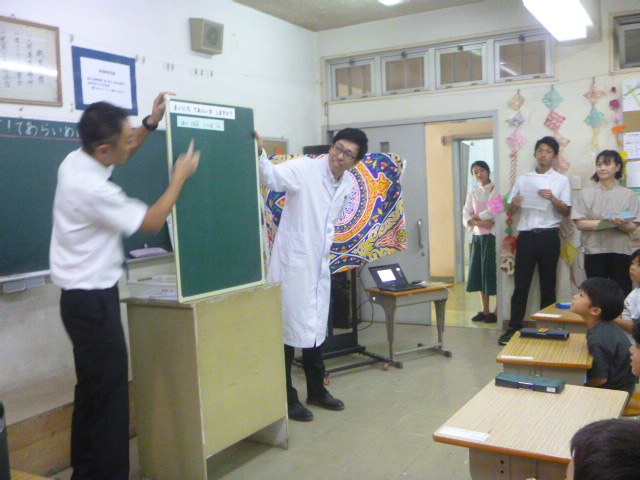 Team-teaching lesson ①
Team-teaching lesson ① -
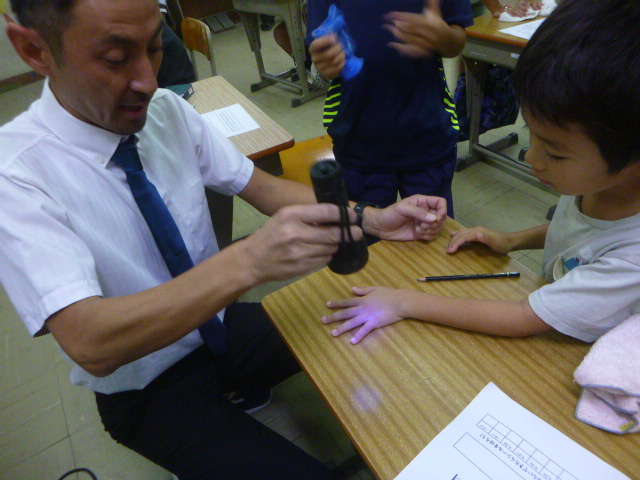 Team-teaching lesson ②
Team-teaching lesson ② -
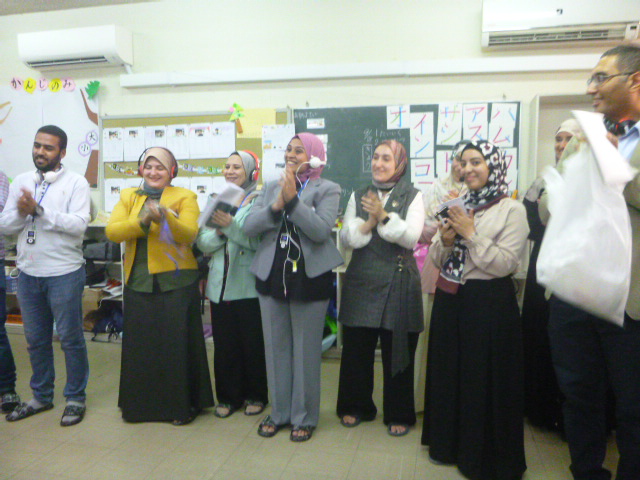 Classroom visitation
Classroom visitation
led to a lively discussion
At the brainstorming session after the open lesson, many comments were made by EJS teachers who practice TOKKATSU regularly, which led to a lively discussion. Some of the questions, answers and thoughts are introduced below.
Question and Answer
| Question (EJS) | Answer (CJS) |
|---|---|
| At EJS, reflection is conducted after one week of practice, but the reflection at this time was set after two weeks. Why? | Because children acquire habits after about a two-week period of practice. |
| It’s difficult to stage an activity with a short frame of 45 minutes per session. Can we discuss the same theme over two sessions? | Lessons are held according to an annual teaching plan. Certain themes can be increased to two sessions if it seems necessary. However, another approach is to complete the discussion in one session and then to encourage practice in daily life. At CJS, notices about handwashing methods are posted where the children can see them, which encourages practice in daily life. |
| Why didn’t you count the duration of hand washing the first time (30 seconds)? | The objective was to learn the correct hand washing method, so it was not necessary to measure the time while learning the process. However, the objective of the final activity was for the students to experience handwashing for 30 seconds, so the time was measured at that stage. |
Thoughts from EJS
- At EJS, the lessons demonstrate the four steps of discussions that have the goal of decision-making (grasp, explore, find, decide). Although it was not explicitly stated by Mr. Hara (T1), this idea was naturally incorporated into the lesson so that the children were aware of it. We would like to adopt this at EJS.
- Although T2 was an external teacher, he and T1 were in perfect harmony.
- Mr. Hara (T1) had excellent time management skills. The session ended on time even though it was a team-teaching session.
- The distancing between the teachers and the children was excellent. The children were free to move and to talk, but the teacher provided precise instruction about the points for improvement.
